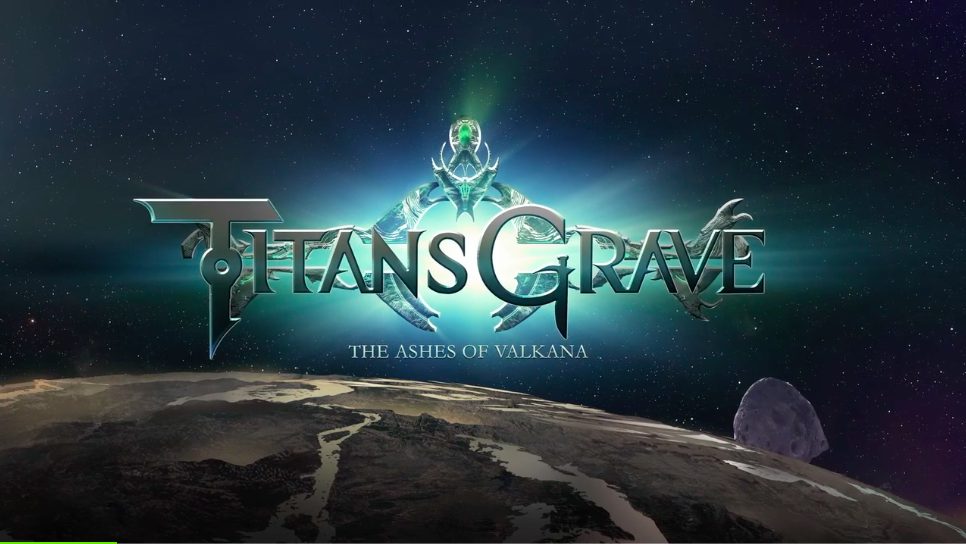Overview: With 2012 over, we can stop obsessing about the Mayans and start digging into other ancient civilizations. How about the Aztecs? Aztlán, named after the mythical homeland of the Aztecs, is a struggle for territorial control among four tribes, and each tribe’s strength waxes and wanes over the course of five ages. War isn’t the only path to victory, though — sometimes peaceful coexistence will be rewarded.
Ages: 13 and up
Playing Time: 1 hour
Retail: $49.99
Rating: Compelling and confounding. The rules aren’t difficult, but grasping the strategy can be tricky.
Who Will Like It? Gamers who like territory control, a bluffing and outwitting opponents, and don’t mind doing a bit of math for scoring.
Theme:
There are four tribes, the People of the Quetzal, the People of the Serpent, the People of the Ocelot, and the People of the Coyote. Each of them is trying to thrive and prosper — peaceful coexistence can bring wealth and prosperity, but sometimes the gods prefer war. But at the end of the Fifth Age, only one tribe will be allowed to remain in Aztlán.
The artwork on the cards and board are nicely done: evocative of the theme but simple enough that they don’t get in the way of playing the game. The scoring pawns are little tiny pyramids that come in two pieces: when you go all the way around the 100-point track, then you add the top onto the base. The mechanics of the game are somewhat abstract, and don’t necessarily correspond thematically, as you place tribe pawns and score points, it’s not clear from the story why the scoring works the way it does.
My fellow gamers were also skeptical about “peaceful coexistence” in a game about ancient Aztecs. That may be true, but it does add a needed balance to the game mechanics.
Components:
- 1 game board
- 120 tribe pawns (30 each in 4 colors)
- 24 power cards (6 each for 4 tribes; numbered 4 to 9)
- 30 prosperity cards
- 1 scoring bonus reference card
- 5 two-part pyramid counters (1 for each player and 1 for tracking the current Age)
The tribe pawns are plastic figurines — all identical except for color, over an inch tall. The pyramids are pretty tiny in comparison, and the top half of the pyramid is especially something you’ll want to avoid dropping, or you may lose it. The board is attractive, showing a bird’s-eye view of a circular region broken up into various types of terrain. The scoring track goes around the board, and there is an Age track on one corner and a turn order track on the opposite corner.
The box insert holds everything in place, with deep wells for the pawns and tiny wells for the pyramid counters. The fifth pyramid is stored underneath the cards. I did discover that placing the pyramids in flat can make them hard to pull out, though, because there’s nothing to grasp except the very tiny point.
Compared to some of the games I’ve played lately, this does feel like a very simple list of components, and is one of the easiest to get out and put away — not much sorting to do or plastic baggies required.
Gameplay:
The full rules are available from the Ares Games website, but here’s an overview.
The basic rules are for a 3 or 4 player game, with optional rules for 2 players. The goal of the game is to score the most victory points by the end of the fifth Age, by controlling the right territories and scoring points from prosperity cards.
Each player picks a tribe and takes all of the pawns and power cards. The scoring pyramids are placed near the scoring track, and the Age counter is placed on the first age. Choose a player order at random and place tribe pawns on the player order track — these may change from age to age. The prosperity cards are shuffled and placed in a stack.
The game takes five Ages, and each Age has the following phases: Choosing, Development, Conflict, Scoring.
Choosing: Each player chooses a power card from their hand and places it facedown on the table. The number will determine your tribe’s strength for this Age. Then everyone gets a number of pawns from their reserve, which is based on the age and number of players. You get more pawns in the first Age and fewer as you go along.
Development: In turn order, each player places one pawn and then optionally moves one pawn. Pawns can be placed anywhere (except the lakes), including territories occupied by yourself or other players. After you place a pawn, you may move any one of your pawns on the board to an adjacent territory. The Development phase continues until all players have placed all of their pawns, and then everyone reveals their power card.
Conflict: Starting with the player with the highest score, each player checks all the territories they occupy for conflicts, which occur whenever more than one player is in a territory. The power card is the strength of each pawn, so you multiply the number of pawns in a territory by your power card to get your total power. If the active player has less power, then that territory is ignored (and will be resolved by another player later).
If the active player has more power than any of the other opponents in a territory, then that player decides whether to battle or coexist. Well, the rules say “battle” but basically it’s eliminate: you remove all the other pawns from the territory and they’re discarded. Coexisting means you leave the opponent’s pawns there, and draw a prosperity card (your reward for being benevolent). If there are more than 2 players in a territory, the winner decides to battle all of them or coexist with all of them – you cannot eliminate some and coexist with others. If there is a tie for highest power, everyone coexists (grudgingly, I’m sure) and no prosperity cards are rewarded. Finally, any players who had less power than the tied victors is automatically eliminated.
Scoring: Once each player (in score order) has resolved all of the conflicts, you tally up scores. This is where the math comes in. A “domain” is a series of contiguous adjacent territories that you occupy, even if you’re in the minority in some of those territories. A lake does not connect territories (unless you use the Rafts and Canoes prosperity card). You only score points for a domain if it contains at least one territory shown on your power card — jungle, desert, mountains, terraced fields, or cities. The 4 power card is wild, but you must choose one type of territory to score across all of your domains.
For eligible domains, first you get 1 point per territory in the domain (regardless of territory types). Then you also get the square of the number of territories that match your power card in that domain. (For example, let’s say your power card was 7, showing mountains, and you have a domain that contains 5 territories, 2 of which are mountains. You’ll get 5 points for the territories, and then 2 x 2 = 4 additional points for the mountains.)
After the scoring phase, a new age begins. The power cards you have already used are left face-up on the table so everyone can see what has already been used. In the next age, any pawns left on the board will have the strength indicated by your newly chosen power card. You’ll determine a new turn order: The player with the most victory points goes first. If two or more players have the same score, the player whose score counter is on top goes first. The turn order should be marked by pawns on the order track on the board.
Finally, at the end of the fifth Age, you calculate scoring normally. Then, you add the bonus value of the power card you have left in your hand, and 1 additional point for every prosperity card you have left in your hand. The player with the highest score wins.
For a two-player game, the “Aztec Gods” variant is used, and it mixes things up a bit. You’ll pair up the tribes into two factions, but you’ll also swap factions each round, which means maximizing your score while leaving enough tribes on the board for your own turn.
Conclusion:
As I said before, the mechanics are pretty straightforward: pick a card, place and move tribes, resolve conflicts. The scoring is a little wonky (more on that later), but the card selection and decreasing tribes each age make for some very difficult choices and allow for interesting strategy.
In fact, the choice of your power card is the key to success. If you start with lower cards (when you have more tribes), you can try to position yourself so that your high-powered tribes can come in late in the game when there are more disputed territories. On the other hand, having a strong tribe early can wipe out your opponent’s pawns, leaving them fewer left in their reserves to place in future Ages.
Also, because the power cards are each tied to a certain terrain, you can try to figure out your opponent’s strength by watching what territories they’re claiming. I’ve been fooled more than once, for example thinking somebody had played the 9 (city) card and trying to calculate conflicts against them, only to discover they used a 6 and I had wasted a lot of tribes gearing up for battle. But the higher the power, the more points the card is worth if you don’t use it, which can also be crucial in a close game.
The prosperity cards can be quite valuable — particularly the “Offerings to the Gods” cards, which multiply in value the more you have of them. That makes for a tricky balance between eliminating your opponents to reduce their score and coexisting so you can draw more cards.
I do have a couple of complaints, though. The scoring is unintuitive — if you have a domain that has a bunch of territories, but it doesn’t contain any matching your power card, then you don’t score at all. But if it contains at least one territory that matches your card, then you get one point for every territory, matching or not. And then on top of that you get the square of the matching territories. It’s not difficult math, of course, it’s just difficult to remember the rules themselves — though if you can’t do sums and squares in your head, there’s a handy chart on the back of the rule book that provides scoring for every conceivable combination of territories. Or the scoring reference card gives you the squares of 1 through 6, in case you don’t know those.
What would be nice to have on a reference card (rather than how to square a small number) is the number of pawns you get in each age for the number of players in the game. You start with 8 in a three-player game or 7 in a four-player game, and then it decreases each round. Those starting numbers would be handy to have either on the card or printed on the board somewhere, because otherwise you have to look them up in the rulebook each time.
Overall, it’s a decent-looking game that appears simple on the surface but has quite some depth once you actually play it. Despite the clunky scoring formula, it’s an easy-to-learn game that’ll leave you scratching your head for the best strategy. With the choice between battling and coexisting, as well as the hidden power levels, it doesn’t feel like your typical territory-control board game. So if you’ve had enough of Risk but you still like the idea of ruling the world, consider a visit to Aztlán.
Wired: Surprisingly deep strategy from a simple set of mechanics.
Tired: Weird scoring formula isn’t intuitive.
Disclosure: GeekDad received a review copy of this game. All photos by Jonathan H. Liu











